Dr. Christina Ionescu’s chief achievement is in innovative, future-ready curriculum design and implementation: beginning in 2019, the Visual and Material Culture Studies Program (VMCS) was meticulously crafted from scratch to reflect a scholarly shift away from the interpretation of texts and verbally-supported ways of knowing, which have traditionally formed the foundation of the Humanities and Social Sciences, and toward an examination of images, objects, spaces, and performances. Dr. Ionescu articulated a compelling vision for this interdisciplinary, cross-cultural, and trans-historical program at Mount Allison University (currently the top primarily undergraduate university in Canada according to Maclean’s annual university rankings). Tailored pathways, experiential and applied learning, training for in-demand skillsets, and curiosity-driven pursuits are the staples of this flourishing program. As lead architect of this new program, Dr. Ionescu sought to address a transformational cultural change: the world in which her students live has become increasingly dominated by images and visual media. Students no longer read the news and instead watch it on the internet; on Instagram, they express their thoughts and emotions visually through images with minimal captions, and on Snapchat, they share photos and videos with little explanation; and they spend their leisure time on social media, playing online games in which special visual effects matter the most, and viewing streamable series on platforms such as Netflix, music on YouTube, and personalised videos on TikTok. Yet around 2019, her institution, like many others worldwide, still lagged behind in its adaptability to this shifting media landscape and increasingly visual means of communication, adopting primarily text-focused approaches and methodologies in pedagogy, course delivery, and student evaluation. VMCS was thus created to fill a conspicuous gap, reflecting a world rapidly changing and responding through its customised programming to a Canadian and global context in which visuality and materiality are increasingly important.

5th PLACE
University Leader of the Year Award
Christina Ionescu
5th PLACE University Leader of the Year Award
Mount Allison University, Canada's top undergraduate university, located in Sackville, New Brunswick, on the East Coast of the country - Canada
"Visual and Material Literacies: Keystones of the 21st-Century Education"

Engage on social media
(Professional Profile)
(Official VMCS Program Page)
(Official Instagram Page)
Have a say and vote for this entry to win the People's Choice Award!
500 points per vote
Provide your email address and click on "vote". You will then receive an email that enables you to verify your vote by clicking on a link.
1500 points for each share/re-post; 500 points for each like
This entry has not provided any social media links for community voting.
Summary
Key People
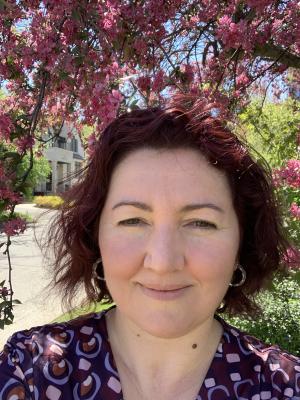
Dr. Christina Ionescu
Professor and Program Director
Visual and Material Culture Studies,
Mount Allison University
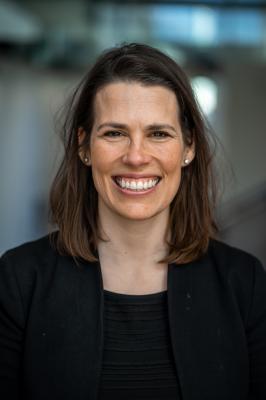
Dr. Susie Andrews
Professor
Visual and Material Culture Studies,
Mount Allison University
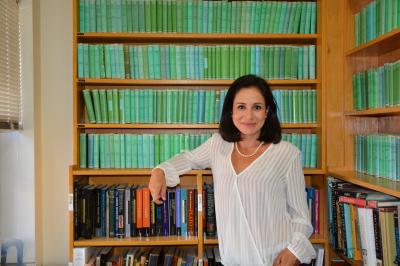
Dr. Ilaria Battiloro
Professor
Classical Studies / Visual and Material Culture Studies,
Mount Allison University
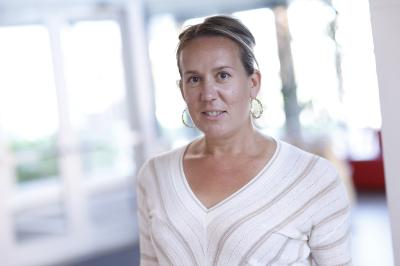
Dr. Lauren Beck
Professor / Canada Research Chair
Visual and Material Culture Studies,
Mount Allison University
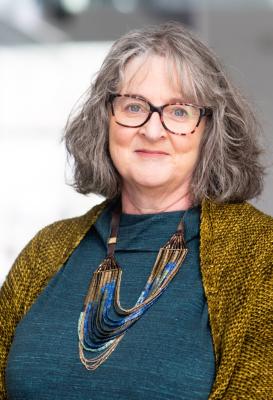
Dr. Patricia Kelly Spurles
Professor
Visual and Material Culture Studies,
Mount Allison University
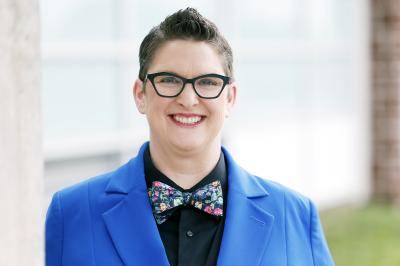
Dr. Vicki St. Pierre
Dean of Arts
Music / Drama,
Mount Allison University
Images
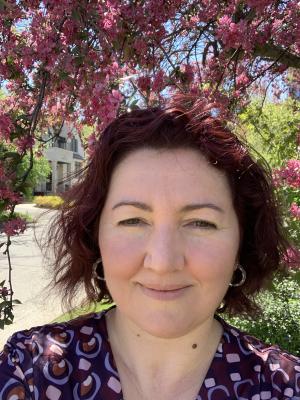
Dr. Christina Ionescu
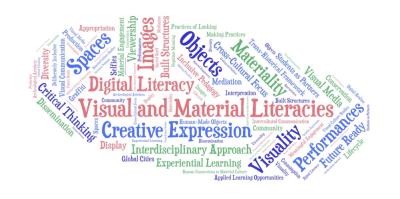
Visual and Material Literacy Word Cloud
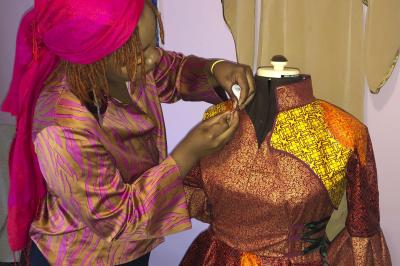
VMCS Student Kawama Kasutu engaging with the materiality of her Zambian family heritage by designing a dress
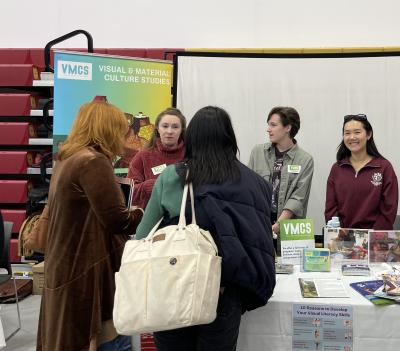
VMCS Students Promoting Visual and Material Literacies on Campus
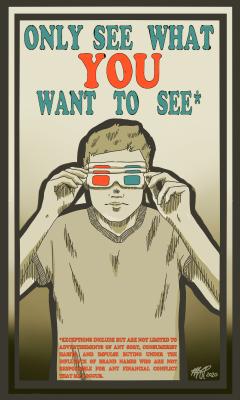
Poster designed to raise awareness about visual literacy by VMCS Student Manny Travers
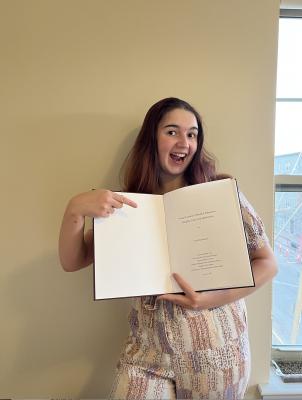
First Honours student in the program, Kate McSweeney, showing a copy of her thesis, which deals with the importance of visual literacy for healthcare professionals
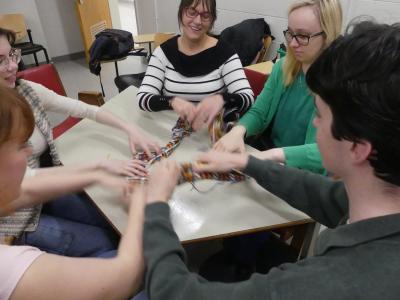
VMCS students fulling cloth in Homo Faber: We Are Makers
IMPACT STORY
Impacting lifes
Dr. Ionescu’s most impactful story is rooted in her lived experience and sparked by a seemingly harmless question: “But where are you originally from?” After Dr. Ionescu moved to the east coast of Canada, it was a question she was often asked by strangers, one that pointed out her non-belonging to a close-knit community and her otherness, linguistic and cultural. That question followed another one, “Where are you from?,” which she always answered with a deliberately evasive statement: “I moved to the Maritimes from Toronto.” She was born in Romania, moved to Canada at the age of seventeen as an immigrant with her family after six months in Germany, spent a year abroad in France following high school, and studied in Toronto, a multicultural metropolis and her cultural home. The dreaded question not only sparked an identity crisis but also sent her mentally back to Communist Romania, which she had left in its darkest hours.
In response to this unsettling personal experience, she created the trailblazing Bridging Culture Differences, a course that innovatively uses images and objects from various timeframes and geographic regions to teach students how to play the role of cultural mediators. She begins her first lecture with a reflection on this experience and it has elicited moving responses from students who at times painfully feel like linguistic and cultural Others – international students, newcomers to Canada (immigrants, refugees, or migrants), or ethnically-marginalised individuals – as well as those who innocently ask that question in a simple effort to connect.
LEARNINGS
Lessons learned
How does one create a new program and academic unit without a precedent, in a discipline that is not recognised as such, and at a small liberal arts university that holds on to tradition, established structures, and conventional measures of success while facing significant financial constraints?
It begins with articulating an inspiring and groundbreaking vision for a new program – in our case, starting from the premise that it has become vital in university education to equip students with the knowledge and skills to think critically, cross-culturally, and trans-historically about images and objects using an interdisciplinary lens, to understand their connections to the material culture that surrounds them, and to reflect on the crucial role that pictures, things, and built structures play in their lives.
Once the university administration was on board, the next step was to shepherd the proposal for a student-centred, future-oriented program aiming at building visual and material literacies through the intricacies of the collegial system and the external accreditation process while learning valuable lessons in diplomacy, compromise, and patience. What helped was that the Visual and Material Culture Studies Program strategically capitalises on an institutional strength – a concentration of faculty teaching and researching in this interdiscipline – and that was presented as a latent and exciting opportunity for growth and fostering inter-unit collaboration. The key insight gained was that after painstakingly crafting a persuasive and place-specific vision for a new program, it has to be positioned as a sustainable and astute investment of human capital and financial resources.
FUTURE PLANS
What's coming?
Sharing the practical and innovative template for program development and pedagogical practices in a vital but underdeveloped intersectional field of studies, visual and material culture, with those who are looking for curricular renewal inspiration. Universities throughout Canada and the world face dwindling enrolments in the Arts and Humanities, but this unique program that targets visual and material literacy, intercultural communication skills, and global engagement is a thriving academic unit that equips students with a 21st-century education. The impressive achievements of this program – as attested by its unprecedented growth, course enrolments, and the first cohorts’ post-graduation trajectories – demonstrate that the Arts and Humanities can be deemed relevant by the diverse, globalised, socially conscious, tech-savvy, and pragmatic Generation Z. This success furthermore runs counter to arguments against the Arts and Humanities that highlight their perceived lack of practicality, position them as a poor financial investment, and criticise their political or ideological biases. It is a story worth sharing.
Equally important is to communicate information about a key component in this program, the interdisciplinary Certificate in Visual Literacy and Culture, in order to raise awareness about the importance of visual literacy and provide a model that can easily be implemented worldwide. To be successful in navigating careers and personal lives, 21st-century students must acquire the critical and analytical skills required to expertly decode visual communication, interpret images and visual representation, use visual materials proficiently and creatively, and grasp the impact of visual culture. This certification opens doors for graduates that would otherwise remain closed.

